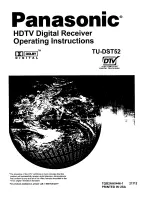
14
TK-2212/2217
CIRCUIT DESCRIPTION
Fig. 6 Microphone amplifier
Fig. 7 Drive and final amplifier and APC circuit
3) APC Circuit
The APC circuit always monitors the current flowing through
the RF power amplifier (Q106) and keeps a constant current.
The voltage drop at R127, R128 and R129 is caused by the
current flowing through the RF power amplifier and this
voltage is applied to the differential amplifier IC101(1/2).
IC101(2/2) compares the output voltage of IC101(1/2) with
the reference voltage from IC405. The output of IC101(2/2)
controls the VG of the RF power amplifier and drive amplifier
to make both voltages the same.
The change of power high/low is carried out by the change
of the reference voltage.
4) Encode Signaling
(1) QT/DQT
QT,DQT data of the QTTCXO Line is output from pin 28 of
the CPU. The signal passes through a low-pass CR filter
and goes to the TCXO(X1).
2) Drive and Final Amplifier
The signal from the T/R switch (D101 is on) is amplified by
the pre-drive (Q102) and the drive amplifier (Q103) to 50mW.
The output of the drive amplifier is amplified by the RF power
amplifier (Q106) to 5.0W (1W when the power is low). The
RF power amplifier consists of two MOS FET stages. The
output of the RF power amplifier is then passed through
the harmonic filter (LPF) and antenna switch (D103 and
D104) and applied to the antenna terminal.
From
T/R SW
(D101)
DRIVE
AMP
RF
POWER AMP
LPF
ANT
SW
D103
D104
ANT
VG
VG
VD
Q103
Q106
Pre-DRIVE
AMP
Q102
VDD
5T
R127
R128
R129
+B
IC101
(2/2)
IC101
(1/2)
PCTV
(IC405)
IC301
IC405
LPF
DTMF
QTTCXO
QTVCO
CPU
AGC
VCO
MIC
X1
TCXO
LPF
LPF
AQUA-L
The QT,DQT data of the QTVCO Line is output from pin 24
of the CPU. The signal passes through a low pass CR filter,
mixes with the audio signal, and goes to the VCO modulation
input. TX deviation is adjusted by the CPU.
(2) DTMF
High-speed data is output from pin 2 of the CPU. The signal
passes through a low-pass CR filter, and provides a TX and
SP out tone, and is then applied to the audio processor
(IC301). The signal is mixed with the audio signal and goes
to the VCO.
TX deviation is adjusted by the CPU.
(3) MSK (Fleet Sync)
Fleet Sync utilizes 1200bps and 2400bps MSK signal is
output from pin 6 of IC301. And is routed to the VCO.
When encoding MSK, the microphone input signal is muted.
5. Power Supply
There are four 5V power supplies 5M,5C,5R, and 5T. 5M
for microprocessor is always output while the power is on.
5M is always output, but turns off when the power is turned
off to prevent malfunction of the microprocessor.
5C is a common 5V and is output when SAVE is not set to
OFF.
5R is 5V for reception and output during reception.
5T is 5V for transmission and output during transmission.
6. Control Circuit
The control circuit consists of a microprocessor (IC405) and
its peripheral circuits. It controls the TX-RX unit and transfers
data to the Display unit. IC405 mainly performs the following:
(1) Switching between transmission and reception by the
PTT signal input.
(2) Reading system, group, frequency, and program data
from the memory circuit.
(3) Sending frequency program data to the PLL.
(4) Controlling squelch on/off by the DC voltage from the
squelch circuit.
(5) Controlling the audio mute circuit by the decode data input.
(6) Transmitting tone and encode data.
1) Frequency Shift Circuit
The microprocessor (IC405) operates at a clock of
7.3728MHz. This oscillator has a circuit that shifts the
frequency by BEAT SHIFT SW (Q407,Q408).
A beat sound may be able to be evaded from generation if
“Beat Shift” is set to ON when it is generated in the internal
spurious transmission modulated sound of a transceiver.
















































